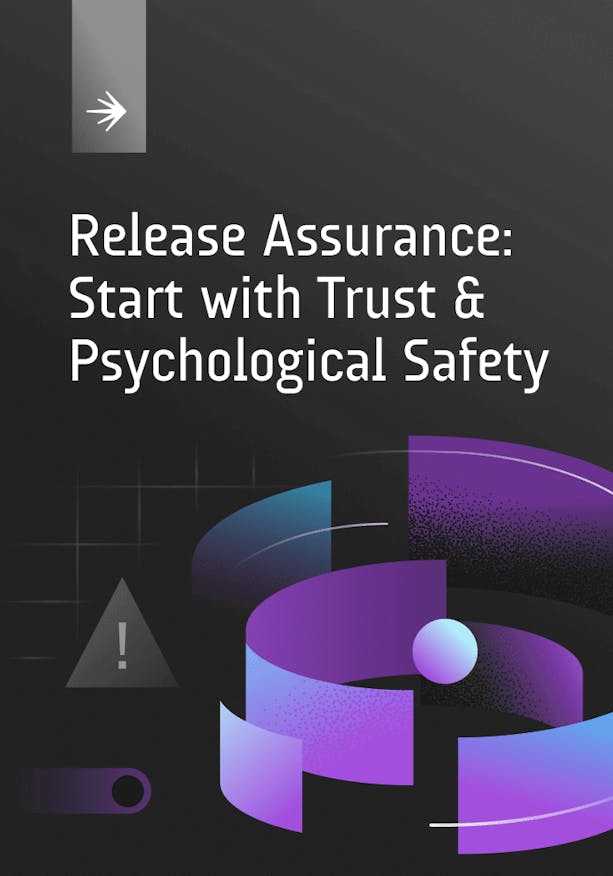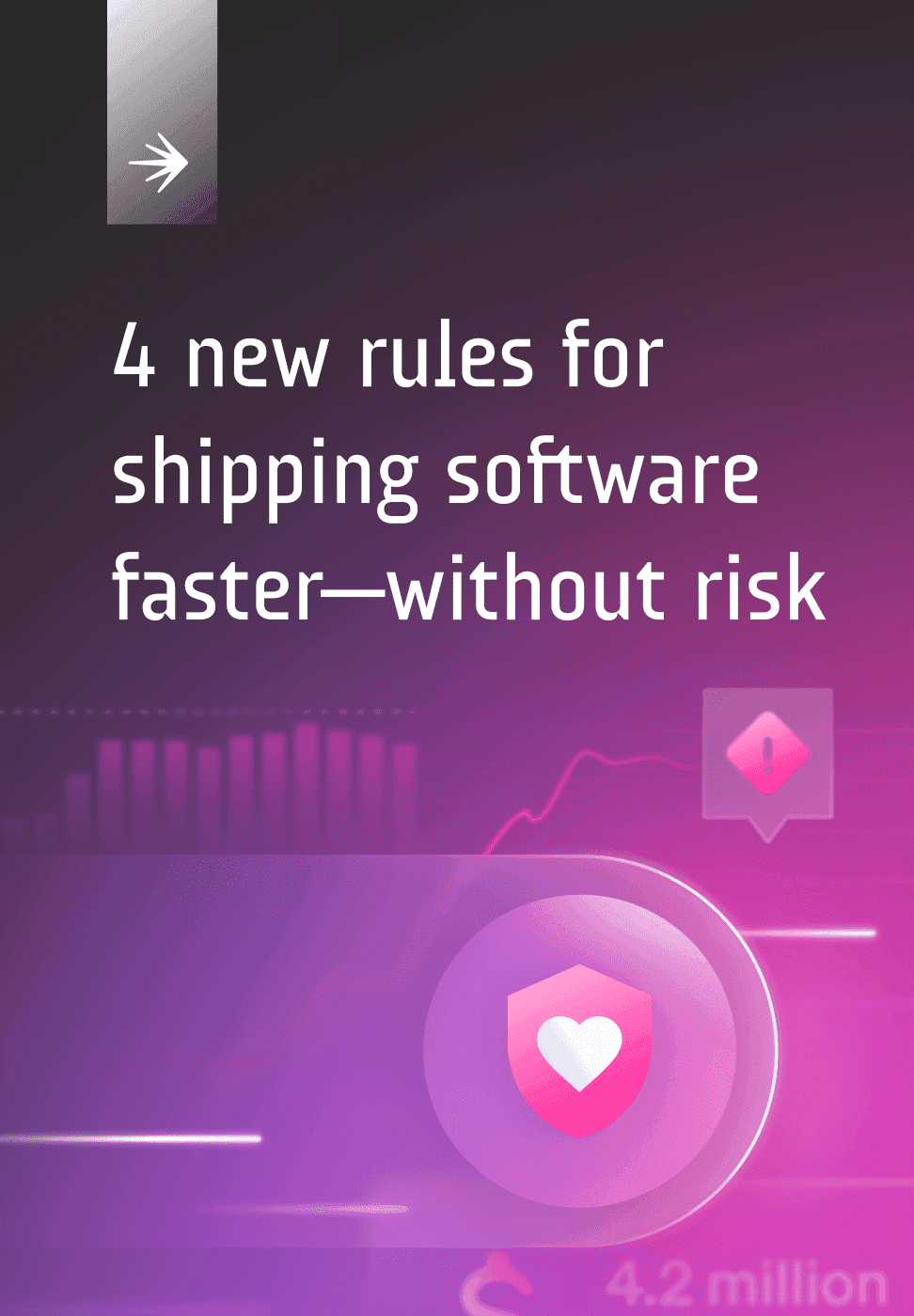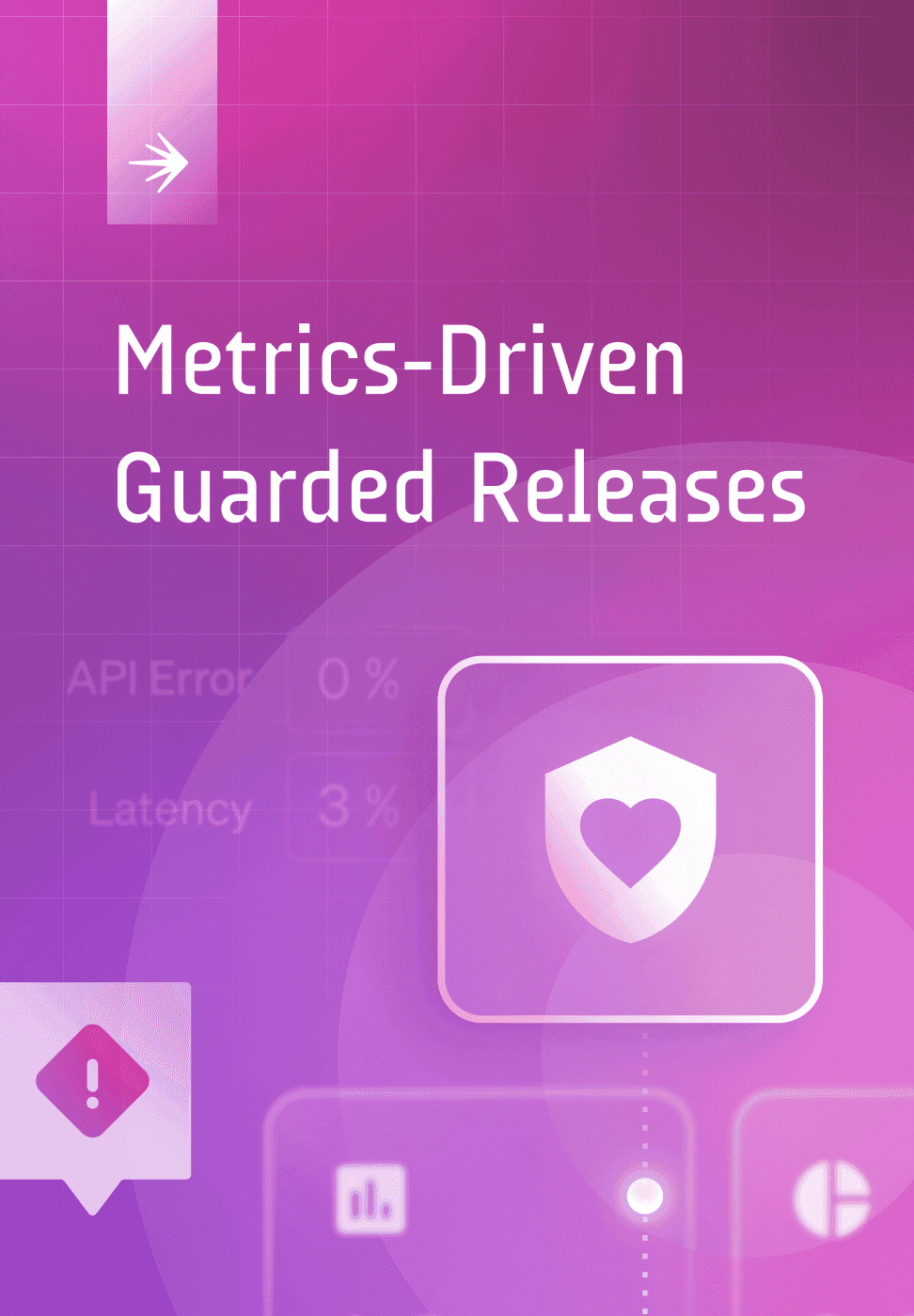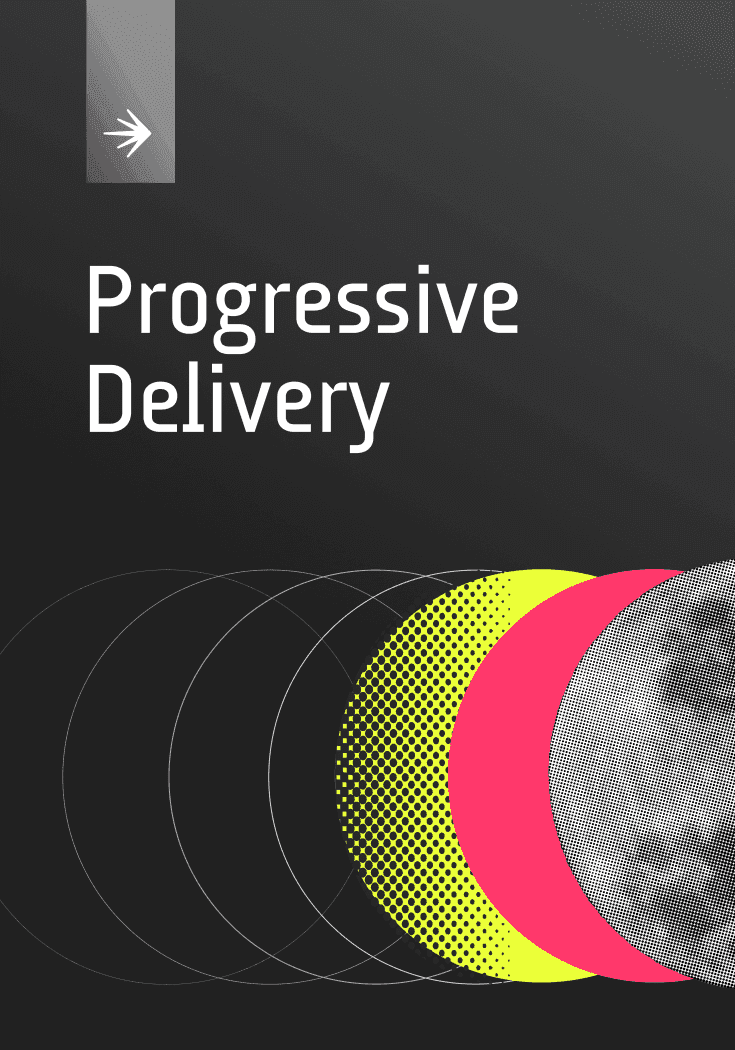Release Assurance
Why Innovative Software Delivery Starts with Trust and Psychological Safety

The processes fueling and fumbling innovation
Every team has a different way of doing things. Various tools, team members, approvals, priorities, hacks, and more all play a role in how a process unfolds. That diversity of modes of operation is one of the most fascinating aspects of software development, but we see some broad trends that you should note if your team is striving for greater innovation.
For starters, releasing new code is a fact of life for developers: 85% deploy new code to production several times a month or more, and more than half (55%) do so at least several times a week. But many of these deployments come with red tape.
A near majority (49%) say releasing code changes to production involves manual approvals most or all of the time. Sometimes manual approvals can be a necessary step, but excessively heavyweight approval processes can also slow down velocity and encourage low-risk policies—ultimately hindering psychological safety as a result.
In this section, we’ll dive into some of the way processes can help to make or break your innovation
Weekly or more is the new standard for release cadence
How often does your team release new code changes to production?
How often | % |
|---|---|
Several times a day | 12% |
Several times a week | 43% |
Several times a month | 30% |
About once a month | 9% |
Several times a year | 6% |
Once a year or less | 0% |
Big bang releases are on their way out. Today’s top-performing teams are releasing around the clock. In our study, 55% of developers say they’re releasing new code to production either multiple times per day or week. It’s not to say that you have to constantly be pushing out code, but if you’re not at least moving in that direction, you can guarantee that a competitor is doing exactly that.
Almost all companies are focused on holding the line between the speed and quality of releases
How much of a company priority is improving developer outcomes for software releases with regards to balancing velocity and quality?
How much of a company priority | % |
|---|---|
The top priority | 36% |
A large priority | 48% |
A moderate priority | 12% |
A small priority | 3% |
Not a priority at all | N/A |
While companies are releasing more often, they’re not looking to do it by sacrificing the overall quality of the product. The overwhelming majority (84%) of respondents say the balance between quick and safe is crucial. This is great news, because nobody wants quantity over quality when it comes to new software updates. Reaching some sort of equilibrium is the goal.
With so much focus on speed, developers are feeling the stress
Which puts more pressure on you as a developer?
Which puts more pressure | % |
|---|---|
Deploying updates more quickly | 65% |
Avoiding rollbacks for deployments | 35% |
Most developers are feeling the pressure of delivering updates faster than ever, but only around a third feel avoiding rollbacks is actually a bigger stressor. The concern here is that organizations are becoming almost too focused on velocity, and potentially losing focus on quality.
Manual approvals are still common, despite increased push for automation
Which of the following best describes the approvals needed to release a new code change to production for you or your team?
Which of the following best describes | % |
|---|---|
All changes require manual approval | 12% |
Most changes require a manual approval, other lower risk changes are automatically approved | 37% |
Most changes are automatically approved, only some high-risk changes require manual approval | 40% |
All changes are automatically approved, no manual approvals required | 10% |
Other | – |
The split is fairly evenly distributed between those requiring manual approvals and those who opt for a lighter, more automatically-approved process. However, 89% of developers say releasing code changes to production involves some kind of manual approval, including 49% who say it’s required most or all of the time.
In spite of research such as the DevOps Research and Assessment (DORA) and from analysts suggesting more automated approvals— which equates with more trust in developers—we still see that for a large portion of teams, manual approvals are common.
And, interestingly, the majority (63%) of those working at companies with fewer manual approvals say their processes are still either a significant or somewhat of an obstacle to innovation.
Organizations should consider the emergence of new techniques that can help alleviate the overuse of manual approvals including: better risk assessment and scoring through analytics, automated methods to mitigate risk areas such as automated testing and kill switches, and release techniques such as canary, blue/green, and progressive rollouts.
Guides & Ebooks
See allSign up for our newsletter
Get tips and best practices on feature management, developing great AI apps, running smart experiments, and more.












